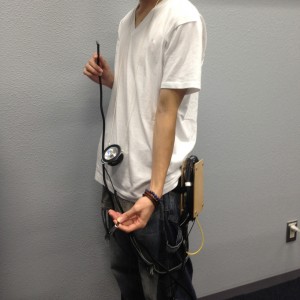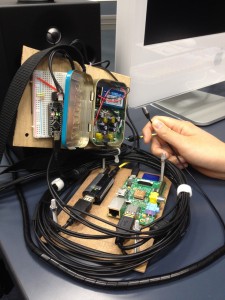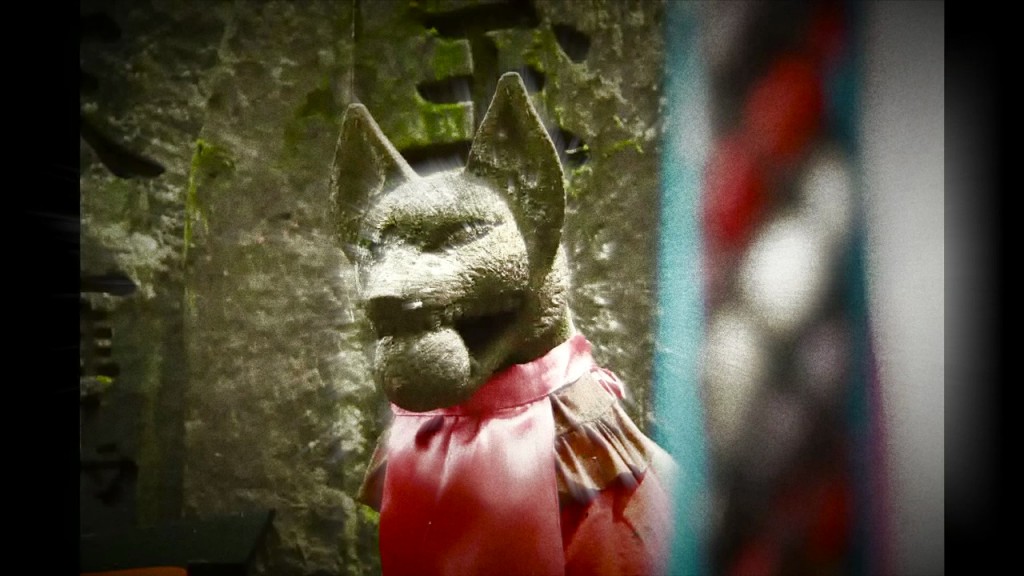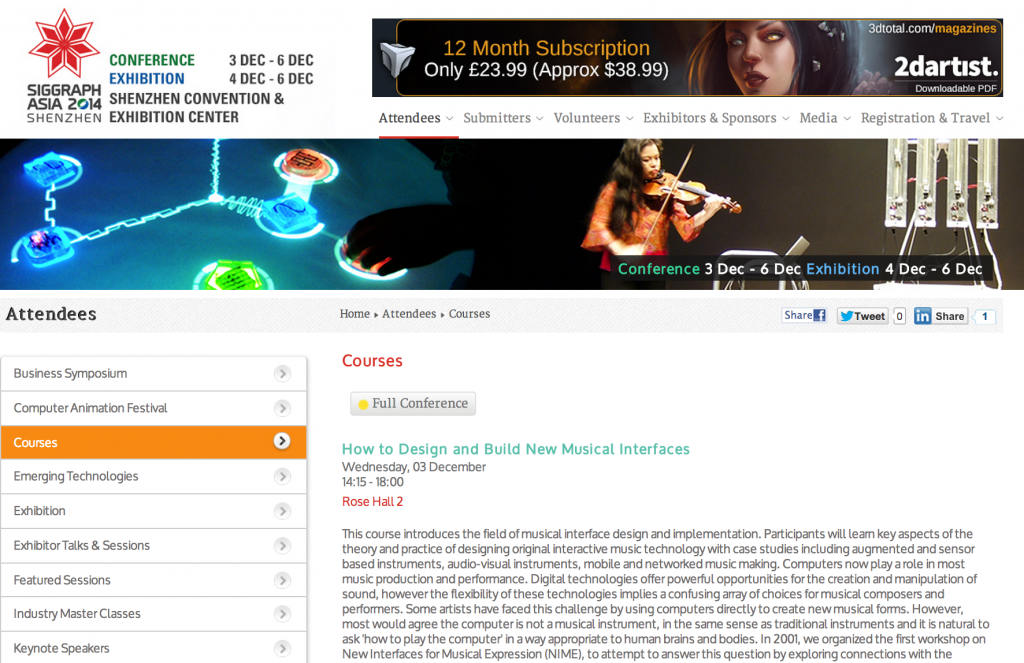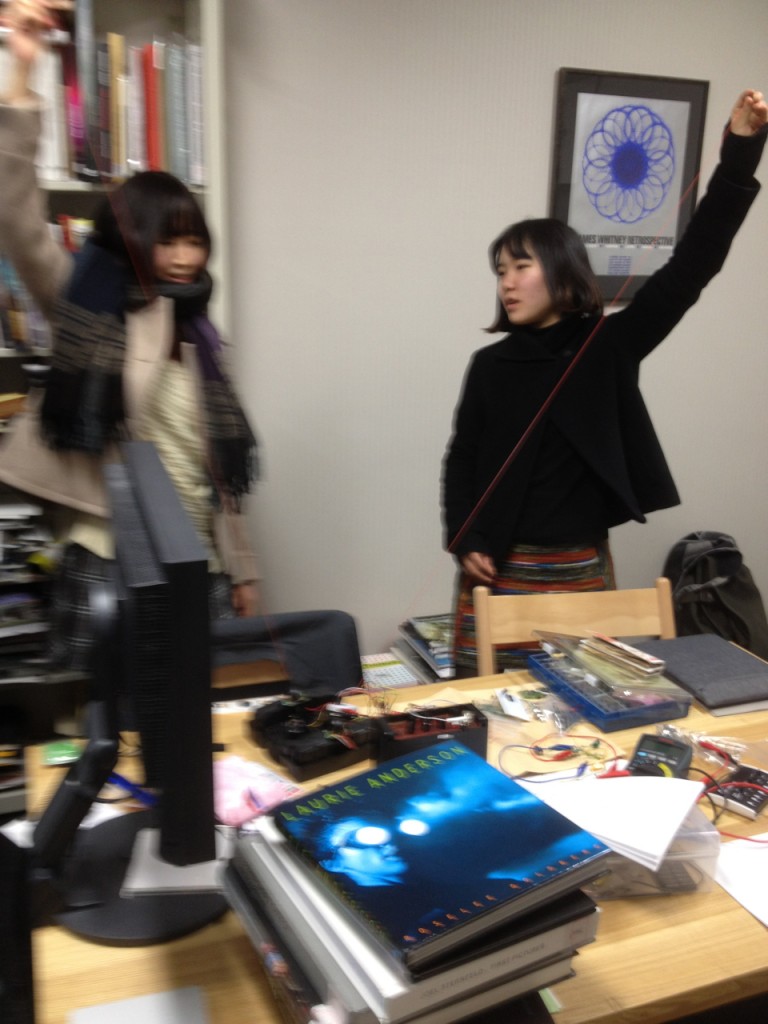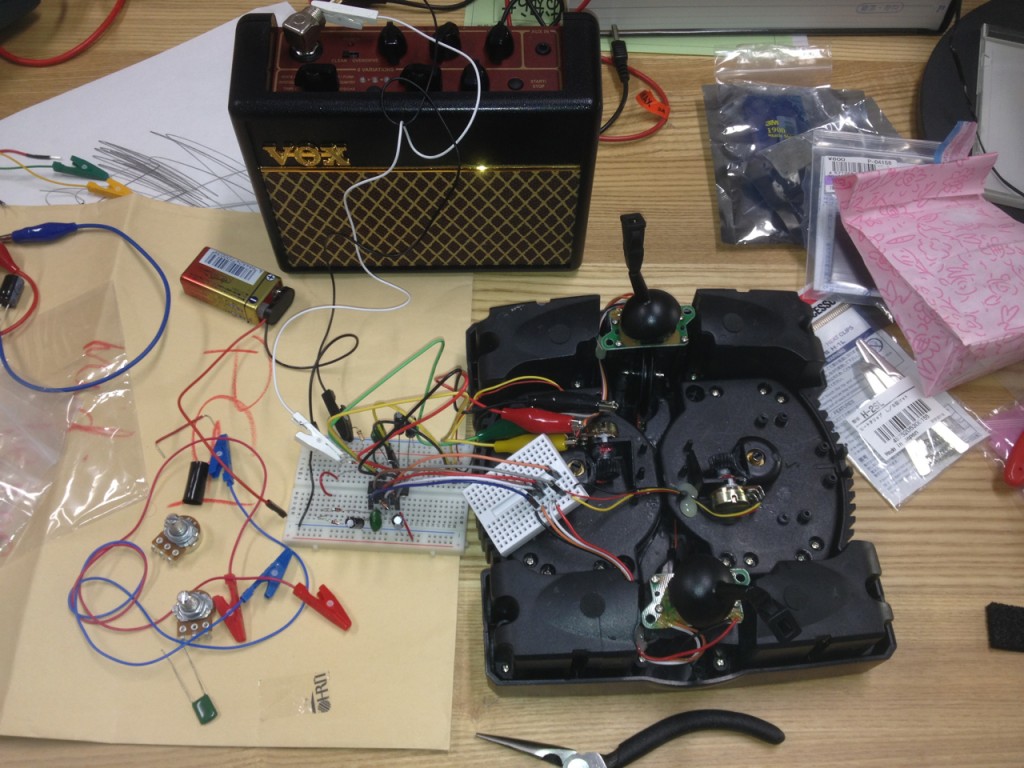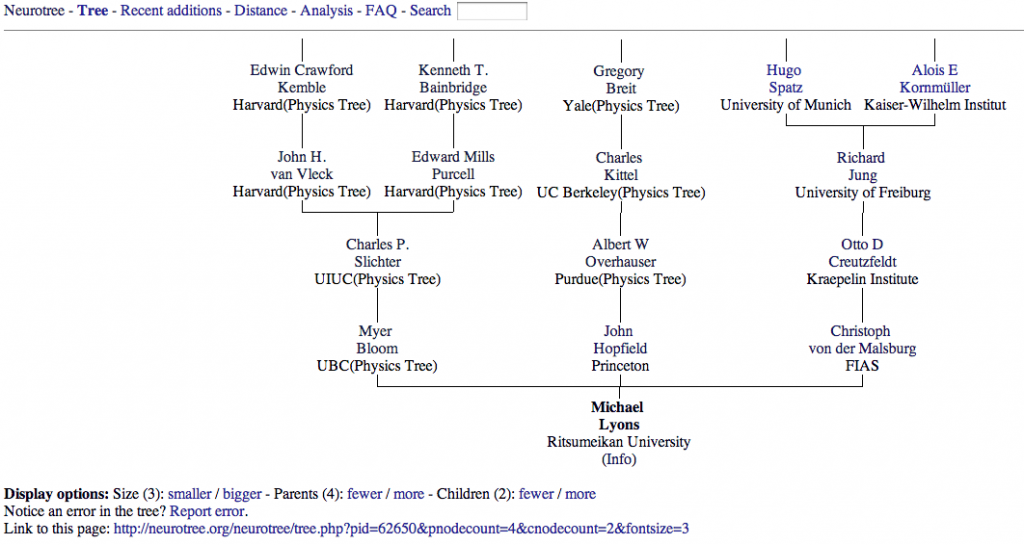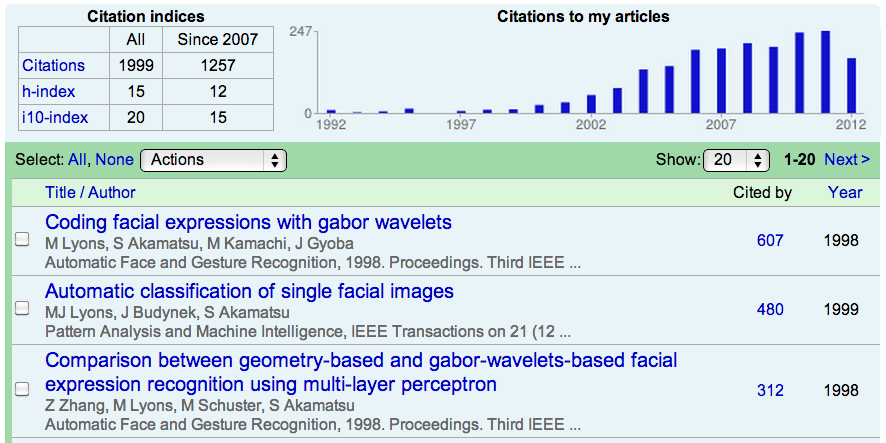Taesu-san gave us a demo of his research today. Nice work!
Category Archives: Research
Live Performance at the Opening Reception of ACM Multimedia 2013
A little more than one year ago, Alex Jaimes and I collaborated on a live intermedia performance for the Opening Reception of the ACM Multimedia 2013 conference in Barcelona Spain. The video below records part of the performance, but it was made with a small pocket digital camera, using the built-in mic, and I was very preoccupied with the performance itself. Unfortunately this is the only record I have of the performance.
It was held October 24, 2013 at the Foment de les Arts i del Disseny, which is housed in an ancient stone building next to Barcelona’s Contemporary Art Museum. We worked with contemporary dancer Laida Azkona and violinist Paloma de Juan who was one of Alex’s colleagues at Yahoo Research Labs in Barcelona. Paloma’s day job is research engineer, whereas Laida is a profession contemporary dancer who has studied and performed around the world.
Again the quality of this video recording is not good, but perhaps it gives some impression of the performance.
The next video is from the first rehearsal for the live performance. Alex, Laida, and I met at my apartment the same day I arrived in Barcelona and we had our first rehearsal a day or two later. We had two more rehearsals after that, which includes a brief one after we had setup and sound-checked on the day of the opening reception. Since Alex and I worked remotely we could not prepare much beforehand, though I had already written and tested the programs needed for capturing movements and converting them to OSC for controlling the video projections. The video clips themselves were edited at the last moment, partly during a visit to Alex’s home in Barcelona. It was a busy but exciting trip!
7th Festival of (In)appropriation
Our short film ‘Soft Pong Inari’, with a soundtrack by Zemi guest speaker Palle Dahlstedt, has been selected for screening at the 7th ‘Festival of (In)appropriation, a festival of experimental found footage films’ which will take place at the Los Angeles Filmforum in February 2015.
SIGGRAPH ASIA 2014 Course: How to Design and Build New Musical Interfaces
Our course proposal was accepted at SIGGRAPH ASIA 2014. The course will be held December 3, 2014 in Shenzhen China. More information here. It will be great to have active participation at SIGGRAPH ASIA from Ritsumeikan !
Palle Dahlstedt @ Lyons Zemi
GameTrakMin Breadboard Prototype
Family Tree
Part of my academic genealogy (ancestry). This is still missing an important root. Perhaps the best known fore bearer visible above is Edward Purcell. Going back another couple of generations, my academic family tree includes Ernest Rutherford, JJ Thomson, Lord Rayleigh, Paul Ehrenfest, Hermann von Helmholz, Ludwig Boltzmann, and others.
1999 and counting
I recently noticed that the number of citations to my published work had reached 1999. Profs in Canadian universities typically have several hundred to several thousand citations. It seems to be less common for profs in private Japanese universities to have a substantial citation rate. Japanese profs with some well-cited publications are more usually located mainly in the (former) National universities or National research institutes. There are some outstanding researchers to be found in places like Todai.
Researchers care about citation rate because it is a measure of the impact their work is having on the research community. Influential work tends to be cited more often. If you want a quick estimate of the impact a prof has made on knowledge, you can easily check to see if any of the work they have published has been frequently cited. The most commonly used index, for several years now, is Google Scholar. The reach of g.s. is global and it is not restricted to publications written in English, but indexes works in the languages of contemporary scholarly activity (Japanese included). Currently, researchers interested in contributing to world knowledge write some (or all) of their articles in English.
Citation rate has been used for many years in most universities and research institutions to make decisions about hiring and promotions. This is somewhat true in Japan too, more commonly in the research-intensive (former) National universities. Research impact, as measured using citation rate has also been used to rank universities and research institutions. Try searching Google Scholar for Harvard University, M.I.T., or Caltech. Now try Ritsumeikan. Interesting (or maybe not)? You can (roughly) estimate the knowledge output of entire cities this way: try out London, Paris, Tokyo, or Kyoto.
Google Scholar can provide insight into a given researcher’s most influential work. In my case, so far our work on face and facial expression classification has had the largest impact. As it turns out, we were the first to study the use of wavelets, a special kind of mathematical function, for processing facial expressions. This subsequently became a popular approach to analyzing facial expression images. I heard from a researcher inside one of the largest global media and electronics companies that ‘smile shutter’ technology was influenced by this research. Indeed, the work was demonstrated to that company (which I won’t name, but you can probably guess) and the other major consumer electronics companies in the mid-nineties. That said, I don’t think automatic smile detection was a particularly interesting application of the work. I am much more interested in the fundamental scientific aspects of the research.
So, how to do work which will be frequently cited? Simple – do cutting edge original work in an interesting field and publish it in a leading peer-reviewed journal or conference. The skill is in knowing where to cut the edge. That was Peter Medawar‘s idea about the art of doing science.
Another way to have frequently cited papers is to frequently cite them yourself. There’s no rule against it, but excessive self-citation is something like masturbating in public because it’s trivially easy to spot this behaviour on the various citation indices. It would be easy enough to link to a few examples of colleagues who don’t seem to be shy about having a lot of self-stimulated citations.
Citation rate may be important but it is not everything: my favourite works, on musical interfaces, and visual perception of art, are less highly cited than the face classification work, though, when published, some of these works did attract attention by the popular mass media. However, the single most influential thing I have done in my research career – organize a workshop held in Seattle in April, 2001 – barely hits the radar on Google Scholar.
For most people, the best ways to do influential work is to collaborate with others who have shared interests and complementary skills. I rarely work alone and that applies to all the work I’ve mentioned above. It’s much more interesting and productive to work with another person or a small group.
SIGGRAPH Asia 2012: Advances in NIME
Prof. Sid Fels (UBC) and I will be presenting our course on Advances in New Interfaces for Musical Expression at the upcoming SIGGRAPH Asia conference to be held at the Singapore Expo in November 2012. Looking forward to spending more time in Singapore.
The SIGGRAPH Asia web site is using our photos as the main banner for the courses page, and these are also visible on the preview slideshow playing on the main conference page.
Printed Optics
This work from friend and colleague Ivan Poupyrev (Disney Research) may be the most interesting application of 3D printing I have seen yet. This simple but brillant idea opens up a huge range of possible experiments.

